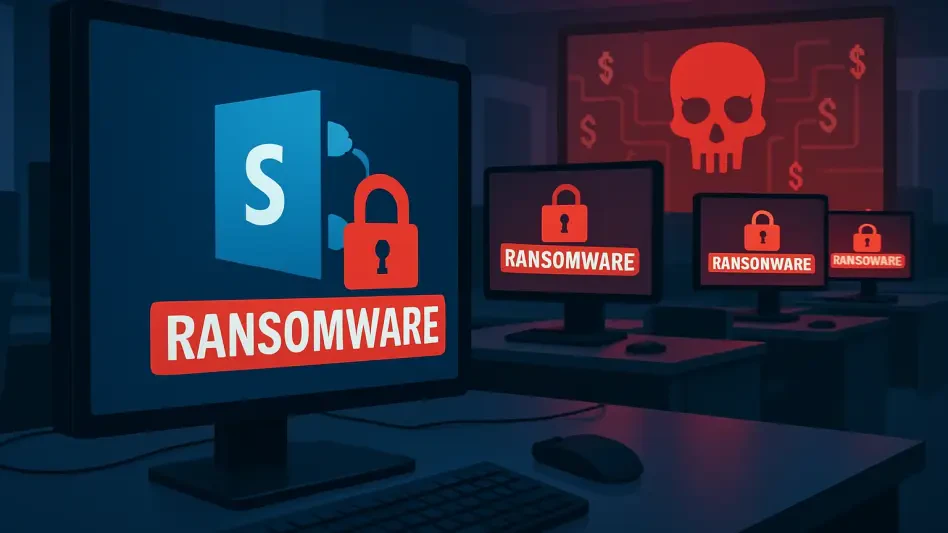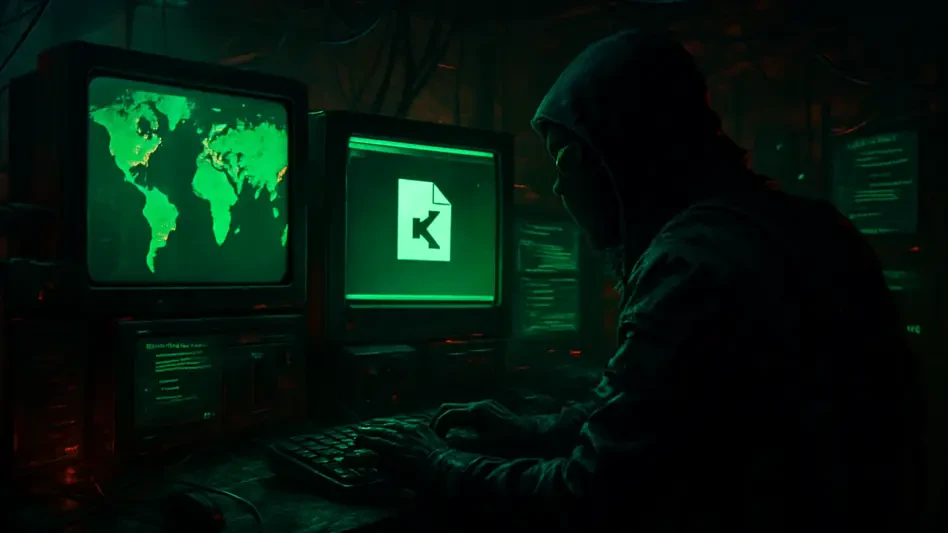In a striking turn of events in 2025, Microsoft faces an alarming cybersecurity crisis, with a zero-day vulnerability in its SharePoint server software posing considerable challenges. Identified as CVE-2025-53770, this deserialization flaw has unleashed unauthorized code execution across networks, leading to severe security breaches. Initially, these vulnerabilities were leveraged for data theft and espionage; attackers have now shifted tactics towards deploying ransomware, amplifying chaos for organizations worldwide. The threat has rapidly grown, jeopardizing hundreds of entities globally, including U.S. federal agencies, academic institutions, energy firms, and telecom companies. While Microsoft has released patches for two versions of its SharePoint software, an older version remains exposed, escalating the risk faced by many users dependent on this outdated version.
The Evolution of Cyber Threats
The transition from data theft to ransomware deployment highlights a significant evolution in cyber threats, with victim counts rising sharply from 100 to nearly 400 in mere days. This scenario underscores the pressing need for effective mitigation strategies. Cybersecurity experts stress the urgency of immediate action, advocating for system patching and digital key rotation to combat unauthorized access incidents such as impersonation and lateral movement within networked applications, including Microsoft Teams. Despite the availability of patches for newer software versions, legacy systems continue to be problematic, prompting many organizations to take drastic actions, such as temporarily disabling servers to prevent further breaches. This exploitation centers on untrusted data deserialization, allowing remote code execution without authentication—a flaw reminiscent of previous SharePoint vulnerabilities. Microsoft’s response, which includes emergency fixes, is deemed critical, yet cybersecurity professionals caution about potential existing backdoors unless swift measures are implemented. The attacks, potentially orchestrated by highly skilled actors, demand a comprehensive defense strategy, emphasizing regular updates, strategic network segmentation, and vigilant anomaly monitoring.
Impacts on Critical Infrastructure
The infusion of ransomware into these cyberattacks carries the potential to trigger widespread disruptions, particularly affecting vital infrastructure sectors. At the forefront of cybersecurity sentiment is the necessity for proactive fortifications like multi-factor authentication bypass mitigations and transitioning to secure cloud platforms. This incident spotlights the hazards posed by unpatched legacy systems amidst relentless exploit developments, compelling organizations to act swiftly to avert further victimization and associated damages. As this incident unfolds, it stands as a wake-up call for enterprises reliant on interconnected software ecosystems, marking a pivotal moment in cyber defense for 2025. In light of ongoing investigations by Microsoft, affected entities are required to urgently secure their environments to prevent an escalation of victim counts. This urgent need to bolster security measures serves as a reminder for organizations globally to prioritize cybersecurity to curb such breaches in the rapidly evolving digital landscape.
Future Considerations
The shift from data theft to ransomware deployment signals a major change in cyber threats, with victim numbers surging from 100 to nearly 400 in just days. This situation highlights the urgent need for strong defense measures. Cybersecurity authorities call for swift action, recommending system updates and digital key changes to thwart unauthorized access, including impersonation and network infiltration in applications like Microsoft Teams. Despite the availability of patches for newer software, older systems remain vulnerable, causing many organizations to resort to severe measures, like disabling servers temporarily to block further breaches. The core issue is untrusted data deserialization, enabling remote code execution without authentication—a flaw similar to past SharePoint issues. Microsoft’s emergency fixes are seen as crucial, yet experts warn of potential existing backdoors unless quick action is taken. These attacks, likely by highly skilled adversaries, require a thorough defense approach, focusing on regular updates, network segmentation, and proactive anomaly detection to counter future threats.








